Movie Where John Wayne Is Shot in the Back
Last Updated on December 11, 2021 by
We're updating this particular article as yet another contender for the films in which John Wayne died has come to our attention, meaning there are now 14 movies in which poor old Duke meets his maker.
These films fall into two categories: those in which we see John Wayne's character actually die on screen, and those in which his character has already passed away, or there's some ambivalence regarding his fate.
The Deceiver (1931)
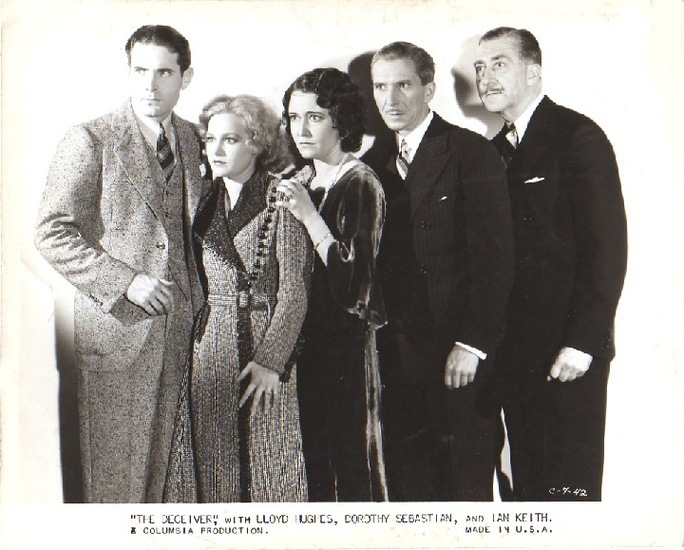
I must admit I'm not familiar with this particular film, mainly because I've yet to take a closer look at Duke's 1930s oeuvre in detail, something I am looking to correct in the near future. Apparently, the character played by Ian Keith dies, after which his corpse morphs into Duke.
I guess when you're starting out on your acting career you take whatever comes along, and why not? Kevin Costner played the corpse in The Big Chill – although his scenes ended up on the cutting room floor.
The Sea Chase (1955)
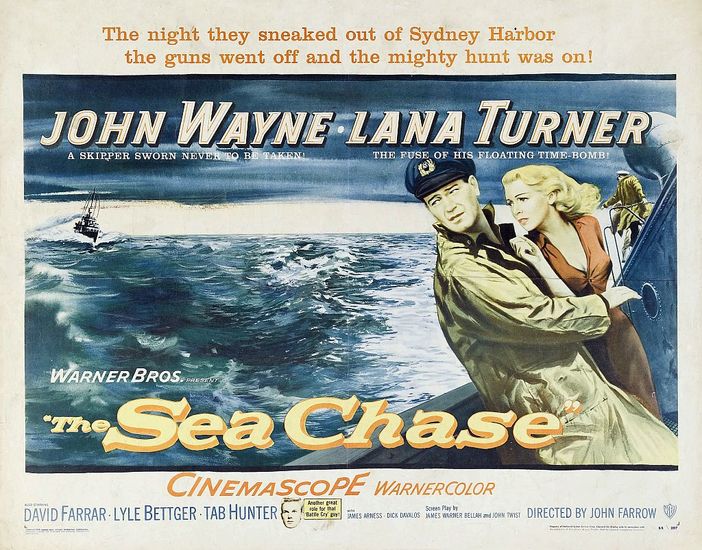
You don't actually find out at the end of the film whether Duke and Lana Turner make it after JW scuttles his ship, but let's be honest here – of course they're going to make it. They were made for each other.
It's obvious Lana lives to stroll off into the sunset with her tall lanky hero, although it's Duke who does the strolling.
Ms. Turner looks so small in this film compared to JW I wouldn't be surprised if he just put her in his pocket before gluing her to the dashboard of his car.
The Man Who Shot Liberty Valance (1962)
No ambivalence here. Duke's character, Tom Doniphon, is as stiff as a board and awaiting burial at the beginning of the film, presumably having died either of natural causes or too much whiskey.

The movie then proceeds to tell in flashback the real story of the man who actually curtailed Liberty Valance's career as town bully of Shinbone.
It can't help but cast a slight pall of despondency over the film as a whole to know right from the start that JW doesn't make it to the final reel, and to be frank this is John Ford at his most pessimistic, but seeing as this is the last of the classic Ford / Wayne Western partnership you just go with the flow.
Hangman's House (1928)
His first appearance is in a flashback sequence in which hanging judge, Justice O'Brien, is visited by a hallucinatory roll call of his victims.
Wayne is seen in profile as a condemned man about to be hung, then he is shown in close-up with a noose around his neck. This sequence, as with a lot of silent films, is more a collection of posed shots, or tableaux vivant as it is known.
Also, Ford was never one to move the camera that much anyway, but you can definitely see it's a young-looking Duke at the end of the rope.
He pops up later on in the film, very much alive, as an excitable member of the crowd at a horse race. In fact, he's so excitable he pulls the fence on the racing course out of the ground at the climax of the race.
The film is now widely available on DVD and worth a watch.
Central Airport (1933)
Not actually listed in the cast, JW plays a co-pilot who tries to save a passenger from drowning when their plane crashes in the sea.
Duke heroically throws himself into the stormy waters after a whisky-swilling passenger slides off of the wing and disappears beneath the waves.

Unfortunately, it appears as though JW has yet to learn how to swim and he drowns along with the passenger. Personally, I'd have let the drunk guy go under on his own.
West of the Divide (1934)
In this film, a young JW appears to play dual roles, one as the good guy, and one as a baddie who casts off his mortal coil within the first few minutes of the film.
From 1931 onwards, right up until Stagecoach eight years later, Duke appeared in numerous Poverty Row oaters during his exile from stardom after the box-office failure of The Big Trail in 1930. On the face of it, West of the Divide doesn't have that much to differentiate it from the other eight features he churned out in 1934 for the Lone Star production company.
Their conversation is suddenly interrupted by a stranger appearing from out of nowhere on foot. He staggers towards them then clutches his throat before collapsing to the ground.
As Duke and Dusty run to the stranger's aid, he utters the words "poisoned waterhole… I didn't know", crawls along the ground a bit then expires. They search him and find a letter of introduction to the man Duke thinks killed his father.
The dead man also has a reward poster identifying him as "Gatt Gans – Murderer". Dusty points out that Duke sure does "resemble this bozo", prompting Duke to take his place and avenge his father's death.
If you watch the scene closely you'll notice you don't see the face of the actor playing Gans whenever Wayne is also in the shot.
Reap the Wild Wind (1942)
Duke's a bit of a rascal in this colourful DeMille sea-faring epic, wrecking his own ship because he mistakenly thinks he's been passed over the captaincy by the main star of the film, Ray Milland.
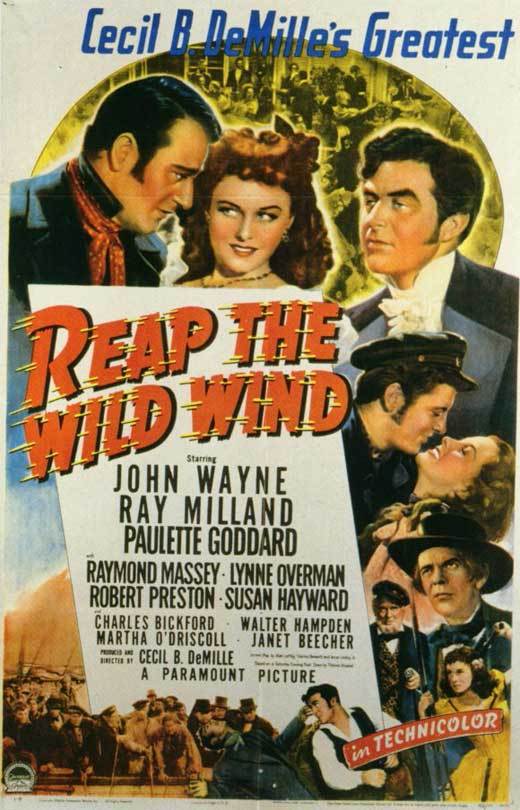
In sinking the ship, he ends up drowning poor old Susan Hayward, who unknowingly to him has secretly stowed herself aboard. There's only one thing for it – JW has to pay for his inconsiderate behaviour.
Cue death by giant squid and everyone else lives happily ever after.
The Fighting Seabees (1944)
A gung-ho war movie about the Pacific War made whilst the war was still being actively waged, Duke plays the wonderfully named Wedge Donovan, heading up a construction crew employed to work under battle conditions.
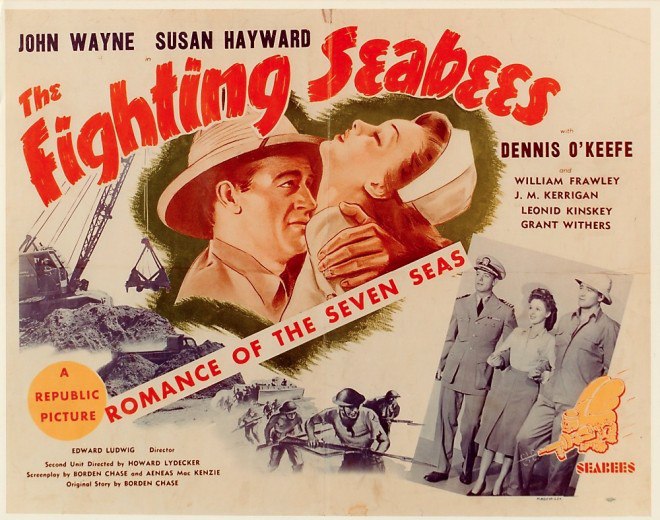
The presence of a love triangle incorporating Duke, Susan Hayward and Dennis O'Keefe inevitably points to the demise of one of them, with Duke pulling the short straw in this one.
His ends up being shot by a sniper as he tries to clear out a nest of Japanese soldiers with a bulldozer – that's one way to fight a war I guess.
Wake of the Red Witch (1948)
Duke really should stop sinking boats. This is the second movie in which he either wrecks or scuttles a ship which serves as justification for his demise in the final reel.
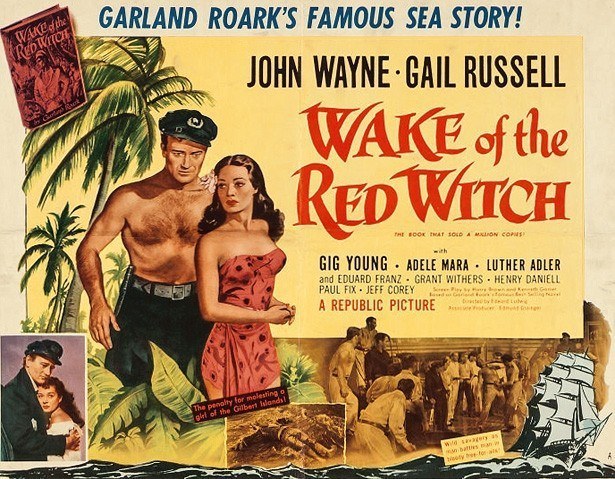
He does the same thing in the later film The Sea Chase but the jury is still out as to whether he goes down with the ship.
In Wake of the Red Witch he drowns whilst trying to recover gold from the very ship he's scuttled. Poetic justice I'd say.
Sands of Iwo Jima (1949)
Duke's role as the bad-ass SergeantStryker gained him his first Oscar nomination – but he ended up with a bullet in the back instead.
He and his fellow Marines have captured Iwo Jima, the flag is famously hoisted at the top of the island, Stryker and his men are at ease with each other then he catches a sniper bullet in the back.
I reckon the sniper was a bit short-sighted. I have a theory he was actually aiming at John Agar as punishment for Agar's dearth of acting talent.
The Alamo (1960)
I get a catch in the throat every time I see poor ole Davy go down fighting at the end of Duke's three-hour epic. Check out the extended road show version and you'll see his death scene, in which JW gets lanced through the side and staked against the mission door, extended by a second or two.
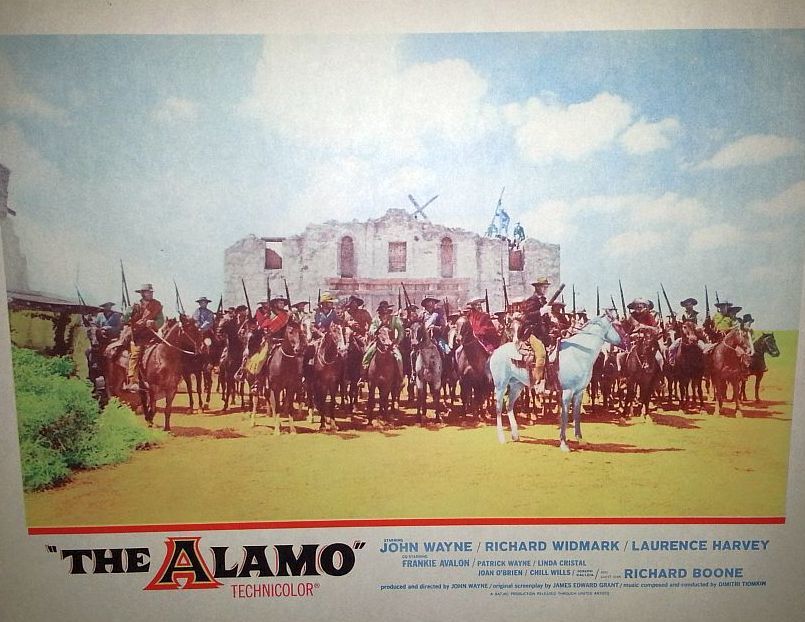 He wrenches himself off the door, staggers away, wobbles a bit (that's the extra two seconds) then stumbles off to blow the arsenal up, an act which I found rather selfish if I'm honest.
He wrenches himself off the door, staggers away, wobbles a bit (that's the extra two seconds) then stumbles off to blow the arsenal up, an act which I found rather selfish if I'm honest.
Then again, if you've just been run through with a bloody great lance you're not exactly in the right state of mind to consider the safety of others.
I remember years ago reading that Pete Townsend of The Who had bought one of those new-fangled VHS video players. He said he loved it because he could watch John Wayne die over and over again any time he wanted. I'm not sure he meant that in a good way.
The Cowboys (1972)
I have to be honest here. Duke's character, cattle rancher Wil Andersen, kind of brings his demise on himself in The Cowboys.
He and his child cowhands are surrounded by a bunch of murderous rustlers lead by Bruce Dern at his most psychotic, and what does JW do? He punches Dern's lights out then turns his back on him.
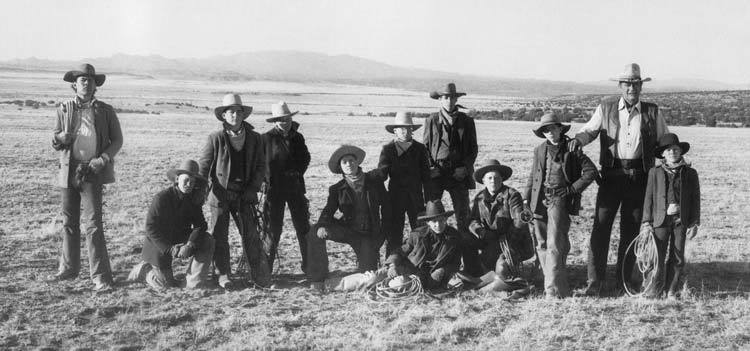
I mean, what's a snake-eyed psycho killer like Dern supposed to do when faced with that? Duke might just as well have painted a target on his shirt with a big arrow and the statement 'Shoot Here' emblazoned on the back.
Dern dutifully obliges and kills Duke in cold blood. I think next to Stryker dying in Sands of Iwo Jima, Duke's death scene in The Cowboys is the most shocking and I guess unexpected by audiences of the time.
The Shootist (1976)
In his last film, JW as dying gunfighter J.B. Books gets to choose the time and the place of his own death, not wanting to suffer the indignity of dying of cancer.

The rest of the film, therefore, serves as a long climax towards the inevitable, Books arranging a showdown with numerous killers who want his notch on their belt.
JW inconveniently kills them all, only to end up being gunned down by a bartender. Not quite the noble and fitting end Duke's character envisaged, but his demise ensures that Ron Howard avoids the life the doomed Books endured.
So, in the end, Books' death is an act of self sacrifice as well as a somewhat messy attempt at self-imposed euthanasia.
Let's summarise the nature of John Wayne's onscreen deaths:
Drowned – 6 (once with the aid of a giant squid)
Shot in the back – 4 (assuming he also drowns in The Sea Chase)
Lanced to death by an angry Mexican – 1
Drinking poisoned water – 1
Hanged – 1
Natural causes – 1
Most of the above are acts of heroic self-sacrifice, the most heroic and the most memorable in my opinion being The Alamo. On balance though, my advice to Duke, if he were around today, would boil down to one thing – don't go near the water.
Movie Where John Wayne Is Shot in the Back
Source: https://mostlywesterns.com/movies-john-wayne-died-in-how/
0 Response to "Movie Where John Wayne Is Shot in the Back"
Post a Comment